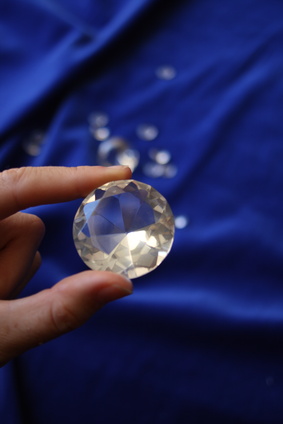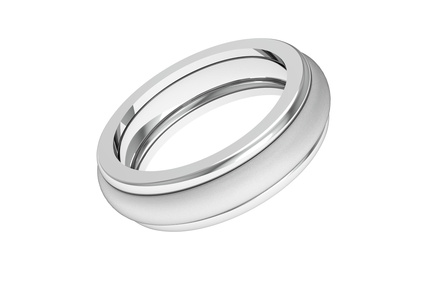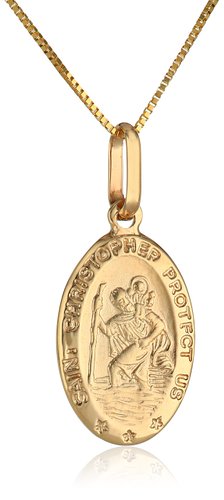There are a number of gemstones that resemble diamonds in appearance, and some even come close in terms of physical properties. Some of these stones are natural, while others are created synthetically. Here we look at gemstones most commonly used as diamond substitutes.
What Is a Fake (or Faux) Diamond?
A fake diamond is a stone that looks like diamond but is in fact made of a different material.
Fake diamonds are also referred to as fake diamonds, imitation diamonds, or simulated diamonds.
You shouldn’t confuse fake diamonds with artificial, or created, diamonds, whose chemical composition is the same as that of real diamonds.
What Defines a Good Diamond Imitation?
A good fake diamond resembles the real thing as closely as possible in terms of physical properties and appearance.
The best imitations are nearly as hard as real diamond, and they are also reasonably clear and colorless.
Gemstones That Look Like Diamonds: Which Are the Best Imitations?
The best fake diamonds are moissanite, white sapphire, and cubic zirconia.
Let’s take a closer look at them and see what makes each one a good choice:
Moissanite
Moissanite is one of the best faux diamonds that exist. It is made of silicon carbide and is almost as hard as real diamond (moissanite’s hardness is 9.5 on the Mohs scale, whereas diamond’s is 10).
Moissanite is also reasonably colorless and looks much like the real thing. What gives away its non-diamond origin, however, is its sparkle – it is more colorful than that of a real diamond.
Moissanite is very rare in nature, and for this reason, many diamond imitations made of this material are lab-created.
Cubic Zirconia
Cubic zirconia (CZ) is one of the most widely used materials to make fake diamonds.
The reason for its popularity is its price, which is only a fraction of what a real diamond is worth.
This material is synthetic and consists of zirconium dioxide.
Although it is pretty cheap, cubic zirconia is not the hardest diamond imitation around. Its Mohs scale rating is 8-8.5 out of 10.
Although this is considered relatively hard, moissanite and white sapphire are diamond substitutes that are harder.
Compared with them, cubic zirconia tends to scratch more easily because it is softer, and when too many scratches accumulate on its surface, it loses its original brilliance.
White Sapphire
White sapphire is another great material to use as a diamond imitation.
Its appearance is similar to that of real diamond and its hardness rating (9 on the Mohs scale) is higher than that of cubic zirconia, although not as high as that or a real diamond.
In addition to its durability, white sapphire’s relative lack of color makes this stone a good fake diamond.
Other Diamond Alternatives
There are other materials that can be used as diamond imitations. Some of them are zircon, rutile, spinel, and synthetic garnet. Although they all look similar to real diamond, they are softer, with a Mohs rating of less than 8-8.5.
Zircon
Zircon is a mineral that occurs in nature and can come in a variety of colors.
Some people confuse it with cubic zirconia, but these two substances are different. Colorless pieces of zircon are sometimes cut, polished, and used as diamond imitations.
This mineral is, however, much softer than real diamond – zircon’s hardness rating is 7.5 on the Mohs scale.
Rutile
Rutile is a mineral that is commonly found in red and brown. Synthetic rutile can be created colorless, and it is this variety that is used as a diamond substitute.
This mineral is, however, much softer than real diamond and scratches easily – rutile’s hardness rating on the Mohs scale is 6.0-6.5.
Spinel
Spinel is a natural mineral that occurs in colors such as red, green, brown, blue, black, and white.
White spinels are colorless, and this is why they are sometimes used as fake diamonds. This mineral is moderately hard at 7.5-8.0 on the Mohs scale.
Synthetic Garnet
Some synthetic varieties of garnet are used as diamond substitutes. For example, YAG (yttrium aluminium garnet) and GGG (gadolinium gallium garnet) are sometimes used to make diamond imitations.
Depending on the process used to create them, synthetic garnet varieties can have a Mohs hardness rating in the 7.5-8.5 range.
Glass
A lot of diamond imitations are made of glass. These substitutes are cheap, but their brilliance and sparkle are nowhere near those of real diamonds.
Also, fake diamonds made of glass are much easier to scratch or chip.
How Fake Diamonds Are Different from Synthetic Diamonds
It should be noted that fake diamond are not the same as synthetic diamonds.
Unlike fake diamonds, synthetic ones have the same chemical composition as real diamonds.
The only difference between synthetic and natural diamonds is their origin – synthetic diamonds are created in a laboratory by using high temperature and high pressure.
How to Choose a Good Diamond Imitation
The best diamond imitation is a stone that looks like the real thing and whose physical properties are as close as possible to those of diamond. An imitation diamond should be primarily evaluated on two dimensions: appearance and physical structure.
When evaluating appearance, you should focus on the color, clarity, and brilliance of the imitation – the same characteristics commonly used to assess real diamonds.
When it comes to structure, there are a lot of physical and chemical characteristics on which imitation diamonds differ from each other, as well as from real diamond, and there is no point in analyzing all of them. You should focus mainly on the stone’s hardness.
Evaluating Color
Color is one of the major diamond quality characteristics, and stones that are colorless are considered the most valuable. So, when choosing a diamond imitation, you should look for simulants that have as little color as possible.
There are a number of stones that are pretty much colorless and can be used as imitations: moissanite, cubic zirconia, white sapphire, zircon, spinel, rutile, and synthetic garnet, to name the most common ones.
Not all of these stones are perfectly colorless, though. For example, many moissanite stones have yellowish tints, which can be more or less visible depending on the stone.
If you are looking for a whiter simulant, cubic zirconia or white sapphire would be a better choice.
Evaluating Clarity
Diamond clarity refers to the absence of internal or surface flaws in a stone. You should be aware that most naturally occurring stones have some imperfections, even if they are only visible with a loupe.
What you should be looking for are imitations that don’t have flaws easily visible with the naked eye – i.e., eye-clean stones. The clearest diamond imitations are those that are synthetic. These stones have been created in a controlled process that minimizes the occurrence of flaws.
Cubic zirconia is a good example – it is lab-created and doesn’t have visible imperfections inside.
Moissanite also rarely has visible inclusions – although it is a naturally occurring mineral, it is very rare, and most of the moissanite sold today is actually synthetic.
Synthetic rutile and synthetic garnet are two other lab-created imitations that are less likely to have flaws compared with real diamond.
Evaluating Brilliance
Brilliance is another characteristic of diamonds that you should look for in an imitation. At the same time, keep in mind that due to the differences in physical properties between simulants and diamonds, they reflect light differently. For this reason, the brilliance of imitations is not exactly the same as that of diamonds.
One stone whose brilliance is very similar to a diamond’s is moissanite, which is actually even more brilliant than the real thing. In addition, moissanite’s sparkle is more colorful than that of diamond.
Cubic zirconia also does not lack in brilliance. Like moissanite, cubic zirconia also sparkles in more colors compared with real diamond.
You won’t be able to find an imitation that looks exactly like diamond in terms of brilliance, but stones such as cubic zirconia and moissanite can come pretty close.
Hardness
Hardness is an important characteristic for gemstones, and considering that diamond is the hardest of all, it is not easy to find an imitation that is close to the original in this respect.
The hardest diamond imitation is perhaps moissanite – its rating on the Mohs scale of hardness is 9.5 out of 10, while diamond is rated 10.
White sapphire is a bit softer – a 9 on the Mohs scale. Cubic zirconia is even less durable, with a hardness rating in the 8-8.5 range.
Most other diamond imitations, such as zircon, spinel, synthetic garnet, and rutile, are no harder than 8.5.
Hardness is important because it is related to durability. Imitations that are softer will scratch more easily – for example, cubic zirconia will accumulate scratches over time, and the edges of its facets will gradually become smoother due to wear.
If durability is important to you, one of the hardest imitations you can pick is moissanite.















